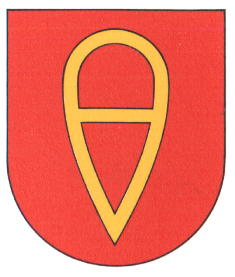Linx: Difference between revisions
Jump to navigation
Jump to search
Knorrepoes (talk | contribs) m (Text replace - "Rheinau" to "Rheinau (Ortenaukreis)|Rheinau") |
Knorrepoes (talk | contribs) m (Text replace - "[[Literature" to "{{media}} [[Literature") |
||
| Line 21: | Line 21: | ||
The symbol is the historical village sign, used for example on border stones. The symbol also appeared on the seal of the local alderman from 1811, who used it with the letter H, his initial. In 1904 the arms were designed in the colours of the State of Baden. | The symbol is the historical village sign, used for example on border stones. The symbol also appeared on the seal of the local alderman from 1811, who used it with the letter H, his initial. In 1904 the arms were designed in the colours of the State of Baden. | ||
{{media}} | |||
[[Literature]] : Huber, 1987 | [[Literature]] : Huber, 1987 | ||
Revision as of 00:52, 9 July 2014
| Heraldry of the World Civic heraldry of Germany - Deutsche Wappen (Gemeindewappen/Kreiswappen) |
LINX
State : Baden-Württemberg
District (Kreis) : Ortenaukreis (until 1973 Kehl)
Incorporated into : 1974 Rheinbischofsheim (1975 Rheinau)
Official blazon
In Rot das goldene Dorfzeichen, ein mit der Spitze nach unten gekehrter Feuerstahl mit Querbügel.
Origin/meaning
The arms were designed and adopted in 1904.
The symbol is the historical village sign, used for example on border stones. The symbol also appeared on the seal of the local alderman from 1811, who used it with the letter H, his initial. In 1904 the arms were designed in the colours of the State of Baden.
Contact and Support
Partners:
Your logo here ?
Contact us
© since 1995, Heraldry of the World, Ralf Hartemink 
Index of the site
Literature : Huber, 1987











